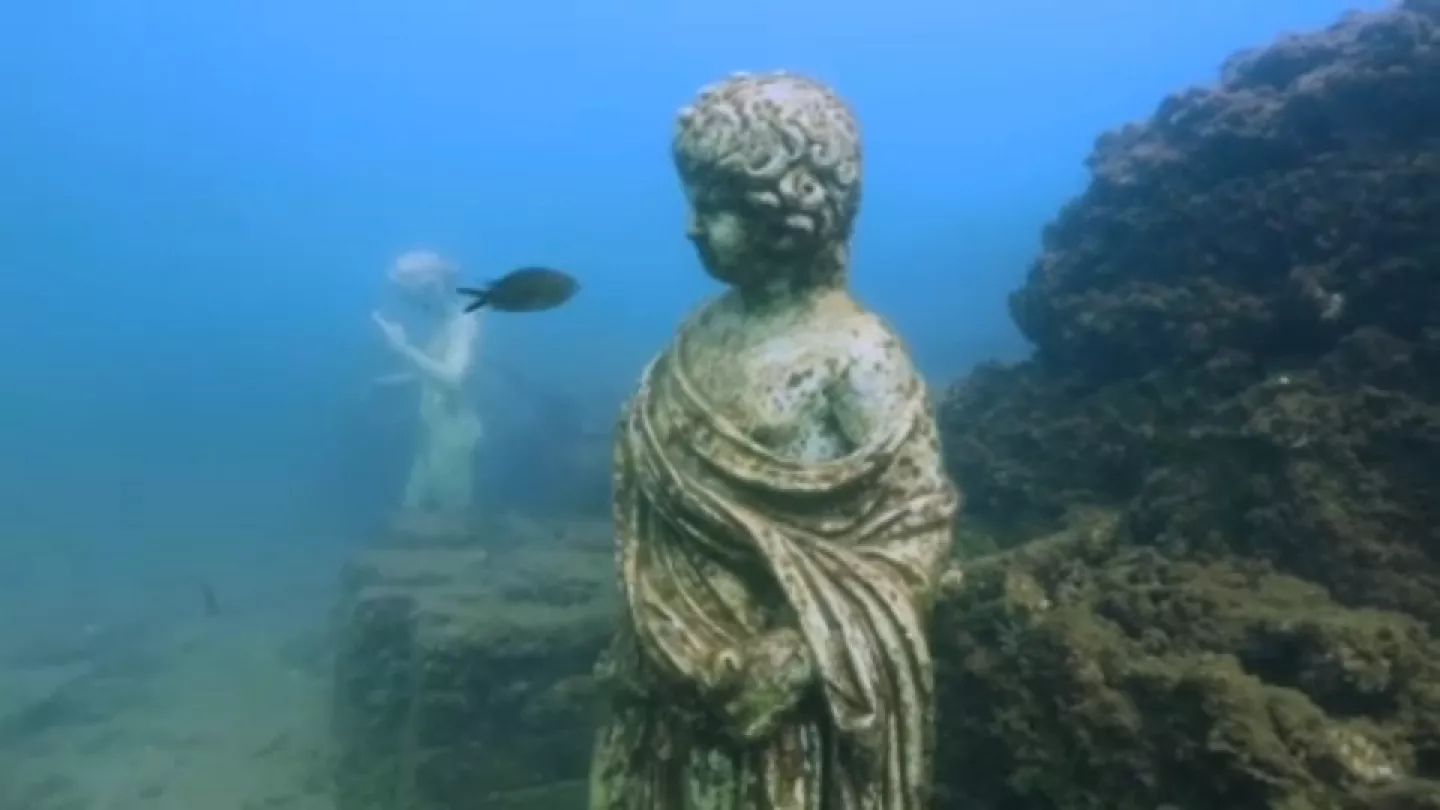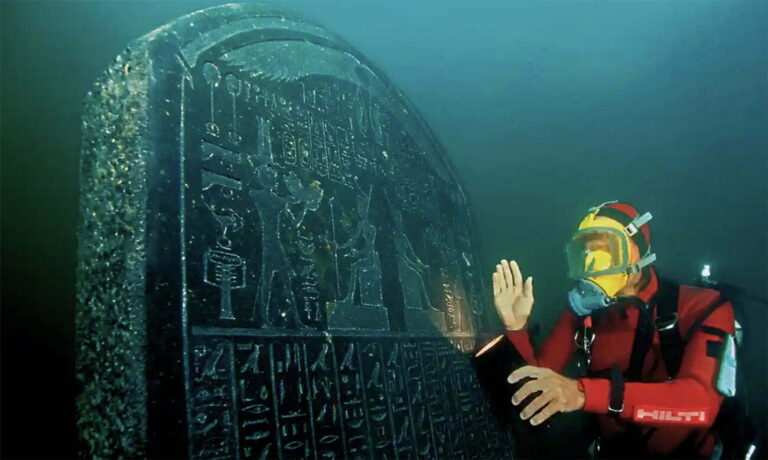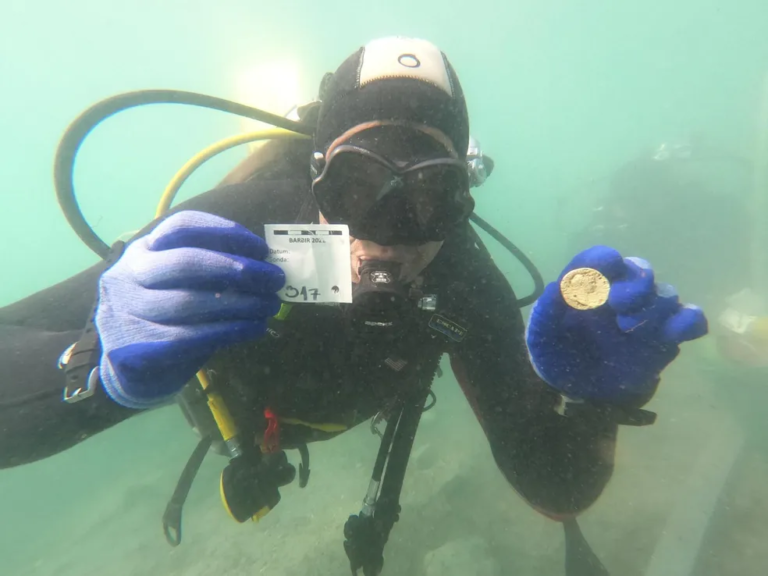Exploring History Beneath the Waves: Recreational Diving and Archaeology
Recreational diving and archaeology are two fascinating fields that intersect beneath the waves, bringing history to life in a unique and immersive way. While recreational diving allows individuals to explore the wonders of the underwater world, underwater archaeology focuses on uncovering historical artifacts and sites that are hidden beneath the surface. This article will provide a brief overview of these two subjects and highlight the importance of underwater archaeology in preserving and understanding our past.
Table of Contents
The Intersection of Diving and Archaeology
Recreational diving and archaeology have long shared an intriguing connection, as both fields involve exploring the depths beneath the waves. The history of recreational diving can be traced back to the early 20th century when diving became more accessible to enthusiasts. With advancements in equipment and training, diving evolved from a professional necessity to a popular recreational activity.
Underwater archaeology, as a subfield, emerged as a result of the growing interest in exploring and uncovering historical sites and artifacts located beneath the waters. This specialized area combines the skills and techniques of diving with the meticulous methods of archaeology.
The combination of diving and archaeology brings forth numerous benefits for exploration and study. By utilizing diving skills and techniques, archaeologists can access submerged sites that are otherwise inaccessible. This opens up a world of possibilities for finding and preserving historical artifacts and structures. Moreover, the underwater environment often provides an excellent preservation medium, keeping artifacts intact and in their original context. This allows researchers to gain valuable insights into past civilizations and reveal important aspects of human history that would have otherwise remained hidden. The combination of diving and archaeology thus offers a unique perspective on historical exploration.
As the fields of diving and archaeology continue to evolve, advancements in technology have further enhanced their intersection. Specialized equipment, such as remotely operated vehicles (ROVs) and side-scan sonar, allows archaeologists to explore the depths more efficiently and accurately. Diving techniques employed during archaeological surveys have become more refined, ensuring the preservation and documentation of underwater sites.
Additionally, underwater photography and videography play a crucial role in underwater archaeology. These tools enable archaeologists to capture detailed images and videos of artifacts and sites, providing valuable evidence for analysis and preservation efforts. The documentation of underwater archaeological sites serves not only for historical research but also for educational purposes and public awareness.
The intersection of diving and archaeology holds immense potential for further exploration and study. The cooperation between recreational divers and professional archaeologists allows for the pooling of resources, knowledge, and skills. With the support of recreational divers who are passionate about history and preservation, archaeological efforts can be expanded, and more sites can be discovered, documented, and protected for future generations.
In summary, the combination of diving and archaeology offers a unique and exciting opportunity to explore history beneath the waves. The history of recreational diving and the emergence of underwater archaeology as a subfield demonstrate the longstanding connection between these disciplines. The benefits of their combination, including access to submerged sites and the ability to uncover and preserve historical artifacts, highlight the importance of this intersection. Through advancements in technology and collaboration between divers and archaeologists, the future of recreational diving and archaeology looks promising, promising new discoveries and a deeper understanding of our past.
Tools and Techniques Used in Underwater Archaeology
Underwater archaeology requires specialized equipment and techniques to explore and study historical artifacts and sites beneath the waves. Underwater archaeologists rely on a range of tools to carry out their work.
One important aspect is the specialized equipment utilized by underwater archaeologists. These include diving gear such as scuba tanks, masks, and fins, which allow archaeologists to navigate and explore underwater environments. Additionally, underwater metal detectors are employed to locate and identify submerged artifacts and structures. These tools are crucial in uncovering and recovering historical treasures hidden beneath the ocean’s surface.
In addition to the equipment, diving techniques specific to archaeological surveys are employed. Underwater archaeologists use grid systems to divide the site into manageable sections for exploration. This allows for systematic excavation and documentation of artifacts and features. Underwater archaeological surveys also employ transect lines to ensure thorough and organized coverage of the area. These techniques enable archaeologists to accurately record the location and context of discovered artifacts.
Another valuable tool used in underwater archaeology is underwater photography and videography. These techniques allow archaeologists to document discoveries, record the condition of artifacts, and create detailed maps of underwater sites. Photographs and videos are not only useful for scholarly research but also play a crucial role in publicizing and raising awareness about underwater heritage.
Overall, the tools and techniques utilized in underwater archaeology play a significant role in uncovering, studying, and preserving history beneath the waves. From specialized equipment to diving techniques and the use of underwater photography and videography, these resources enable archaeologists to document and study underwater cultural heritage. By combining these tools effectively, underwater archaeologists can continue to explore and share the fascinating stories hidden beneath the surface of the sea.
Underwater Archaeological Sites around the World
Recreational diving and archaeology have brought to light numerous fascinating underwater archaeological sites around the world. These sites offer a glimpse into the rich history that lies beneath the waves, providing invaluable insights into our past. Let’s explore some of the most famous underwater archaeological sites and delve into their brief descriptions and historical context.
The RMS Titanic
Undoubtedly one of the most renowned underwater archaeological sites, the wreckage of the RMS Titanic continues to captivate the imaginations of people worldwide. The tragic sinking of this luxury ocean liner in 1912 sparked a fascination with its story and the exploration of its remains. Located in the North Atlantic Ocean, the Titanic’s wreckage has been meticulously studied, revealing important historical artifacts and a haunting reminder of the lives lost on that fateful night.
Baiae, Italy
Baiae, an ancient Roman city, now lies submerged under the waters of the Bay of Naples in Italy. Once a luxurious resort for Roman emperors and aristocrats, Baiae was renowned for its opulent villas, spas, and thermal baths. The city’s submersion offers researchers a unique opportunity to study Roman architecture, infrastructure, and social life from an underwater perspective. Excavations have revealed stunning mosaics, statues, and evidence of the lavish lifestyle enjoyed by the elite during the Roman Empire.
Alexandria, Egypt
A city steeped in history and myth, Alexandria holds a treasure trove of archaeological wonders beneath its waters. Founded by Alexander the Great in 331 BC, this ancient metropolis was renowned for its famous lighthouse, the Pharos of Alexandria, and its massive libraries. Today, much of Alexandria’s ancient landscape lies submerged due to natural disasters and rising sea levels. Underwater excavations have yielded artifacts ranging from statues representing Egyptian pharaohs to remnants of ancient buildings, providing valuable insights into the cultural melting pot that Alexandria once was.
These underwater archaeological sites serve as windows into our past. They provide tangible evidence of civilizations long gone and offer a unique perspective on the lives of those who came before us. The exploration and study of these sites require collaboration between recreational divers and professional archaeologists, as they strive to preserve and interpret these historical treasures. By valuing responsible diving practices and supporting preservation efforts, we can ensure that future generations have the opportunity to explore and learn from these incredible underwater archaeological sites.
*[RMS Titanic]: Royal Mail Ship Titanic
Challenges and Preservation Efforts
Underwater archaeology presents unique challenges that archaeologists must overcome in order to uncover and preserve historical sites beneath the waves. One of the primary challenges faced by underwater archaeologists is the physical limitations of diving. The depths and conditions in which these underwater sites are located require specialized training and equipment to ensure the safety of the divers.
Another challenge is balancing archaeological exploration with conservation and preservation efforts. While the exploration of these sites is essential for uncovering historical artifacts and sites, the disturbance caused by the digging and excavation can lead to damage and deterioration of the fragile underwater environment. It is crucial for underwater archaeologists to carefully plan and execute their excavations, taking into account the preservation of the site and its surroundings.
Responsible diving practices are of utmost importance in protecting these invaluable historical sites. By following guidelines, such as not touching or removing artifacts, divers can minimize their impact on the underwater environment. Additionally, proper documentation and recording of the sites through underwater photography and videography allow for a detailed and accurate record of the artifacts and their context.
Preservation efforts play a vital role in safeguarding these underwater archaeological sites for future generations. Conservation techniques, such as the stabilization and restoration of artifacts, are used to prevent deterioration and preserve the historical value of the objects. Collaboration between archaeologists, divers, and local communities is crucial in implementing effective preservation strategies and ensuring the long-term protection of these sites.
In conclusion, underwater archaeologists face numerous challenges in their pursuit to explore and preserve history beneath the waves. Balancing archaeological exploration with conservation efforts, promoting responsible diving practices, and implementing effective preservation strategies are key components in protecting these archaeological treasures. It is through the dedication and collaboration of individuals and communities that we can continue to uncover and preserve the valuable history submerged beneath the waves.
The Future of Recreational Diving and Archaeology
With the constant advancements in technology, the future holds great promise for the field of underwater archaeology. As we continue to develop new tools and techniques, the process of uncovering and preserving historical artifacts beneath the waves will become even more efficient and accurate.
One potential advancement in technology that could greatly assist underwater archaeological efforts is the use of drones. These remotely operated vehicles can explore submerged sites with precision and capture high-resolution images and video. This would allow archaeologists to thoroughly document and analyze underwater sites without the need for extensive diving operations. The use of drones can also provide a safer alternative for exploring dangerous or fragile environments.
Moreover, collaboration between recreational divers and professional archaeologists will play a crucial role in future exploration. Recreational divers, with their passion for the underwater world, can contribute significantly to the field by reporting any findings or potential archaeological sites they come across during their dives. By fostering a partnership between divers and archaeologists, we can ensure that no valuable historical information slips through the cracks and that every discovery is properly documented and studied. This collaboration will ultimately lead to a deeper understanding of our past.
In conclusion, recreational diving has proven to be a valuable tool in uncovering and preserving history beneath the waves. With advancements in technology and increased collaboration between divers and archaeologists, the future of recreational diving and archaeology is bright. By harnessing the power of innovation and teamwork, we can continue to explore the mysteries of the underwater world and discover the treasures that lie beneath. So whether you’re a passionate diver or simply someone interested in history, consider exploring this unique field or supporting preservation efforts. Together, we can ensure that the history beneath the waves is not forgotten.
Conclusion
In conclusion, this blog post has explored the fascinating intersection of recreational diving and archaeology. We began by discussing the importance of underwater archaeology in uncovering historical artifacts and sites, highlighting how it provides valuable insights into our past.
We then delved into the history of recreational diving, tracing its evolution and emergence as a subfield within archaeology. We also touched upon the benefits of combining diving and archaeology, noting how it allows for more efficient exploration and study of underwater sites.
Next, we discussed the various tools and techniques utilized by underwater archaeologists. From specialized equipment to diving techniques and underwater photography, these resources play a crucial role in the documentation and preservation of archaeological sites.
Moving on, we highlighted some famous underwater archaeological sites, including the iconic RMS Titanic, Baiae in Italy, and Alexandria in Egypt. These sites serve as a testament to the richness of historical artifacts waiting to be discovered beneath the waves.
We then explored the challenges faced by underwater archaeologists, emphasizing the need to balance exploration with conservation and preservation efforts. Responsible diving practices were also highlighted as a crucial aspect of protecting these historical sites for future generations.
Looking towards the future, we discussed potential advancements in technology that could assist underwater archaeological efforts. We also stressed the importance of collaboration between recreational divers and professional archaeologists in driving future exploration and discovery.
In summary, this blog post has demonstrated the significance of recreational diving in archaeology. By combining the thrill of diving with the pursuit of uncovering and preserving history, this unique field offers a wealth of opportunities for exploration and learning. Whether it be through taking up recreational diving or supporting preservation efforts, we encourage readers to engage with this remarkable field and contribute to its continued growth and success.







